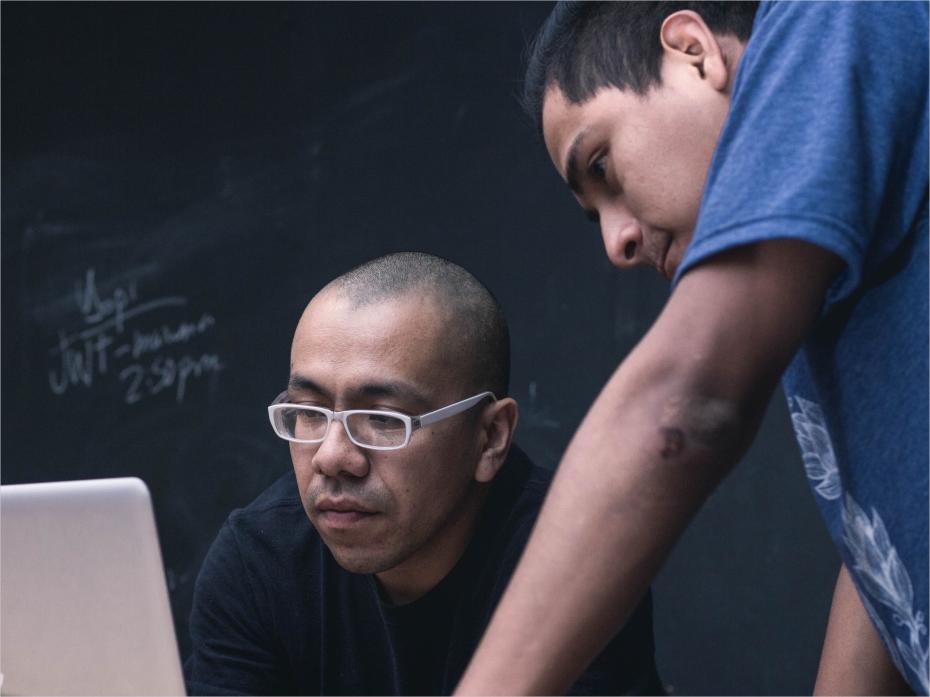
Students are disengaged – and it’s due to how higher ed is structured

Several recent articles have documented the increase in student disconnection and disengagement. While these articles accurately attribute these challenges to a plethora of causes, including changes to cognitive function and concerns over climate change, higher education institutions can still benefit from critical self-reflection. Long before the pandemic and climate anxiety, isolation and disconnection formed the foundation of traditional academic structures.
For the French philosopher Michel Foucault, power operates through social structures that become invisible once they are accepted as normal. These structures, which are fluid and often democratically imagined, limit (or make possible) our thoughts, behaviours and habits. The point here is that academic structures, such as disciplines, which were created by academics to clarify fields of study, also silo and limit possibilities for engagement and connection, especially as we realise the complex intersections of our world/s.
- Should we be aiming for student happiness or student satisfaction?
- Mini virtual writing retreats to support and connect tutees
- Don’t build barriers between yourself and your students
This consideration has enormous consequences for how higher education can respond to disengagement and isolation. In this 2006 article, for instance, Shari Wilson describes how disciplines create both intellectual and social divisions: “Yes, I feel at home in my department meeting. I even feel at home in the liberal arts building. When I traverse the campus to the health professions building to teach my afternoon class, I feel a bit like an interloper.”
2006: almost two decades before every education trade journal began investigating disengagement and isolation.
From an educational research standpoint, these divisions might do more harm than good. While educators have long acknowledged the benefit of a general education, students (and many faculty) often fail to see its value. For those who do fail to see the value of a well-rounded education, it might come down to pragmatics more than ideology. As different programmes compete for limited credit hours, boundaries rather than connections tend to get emphasised. Therefore, the traditional higher education model has been to expose students to the disciplinary tools they need in their majors as soon as possible, despite the fact that such an early introduction often means that these tools are disconnected from students’ experiences and interests. Too often, students specialise in disciplines before experiencing the contexts in which disciplinary tools operate, which, thinking with Foucault, reproduces the power of the structures rather than empowering students to negotiate and change the structures to adapt to an uncertain world.
Stated simply, we teach students particular tools without teaching them how the world can change depending on the tools they use. More to the point, we teach students this because we – as faculty – operate similarly in our professional worlds despite the fact that most professions depend on engagement and connection.
To use a very basic example, imagine the construction of a house. A carpenter, an engineer, an electrician and a plumber (no, this is not a “walk into a bar” joke) need to be in conversation at every stage. It’s not enough for each expert to do their job in isolation; the wiring and plumbing need to be carefully planned so leaks don’t start an electrical fire, and the architecture needs to consider aesthetics as well as integrity. We need even more integration of expertise if we are going to go beyond construction and solve problems such as the housing crisis in the US or the one in the UK.
All this requires engagement and connection by worrying less about the divisions of content and caring more about the integration of processes. Higher education institutions should question the “centre” of teaching and learning. Is it the curriculum? Is it the disciplinary content and knowledge? Is it the teacher (teacher-centred classroom)? Or the student (student-centred classroom)? Notice these options are all nouns. What happens when we instead centre a verb? What might it look like to centre learn(ing) and to include everyone in the process of learning? Mary Wright, Debra Rudder Lohe and Deandra Little suggest some answers:
“Particularly in the context of exponentially increasing access to knowledge about a topic or within a field, ‘learning what’ has given way to ‘learning how’, or what John Seely Brown and Richard Adler (2008) have also called ‘learning to be’ in a given field. Learning why, or communicating a sense of relevance and importance for concepts, is also key (Winkelmes, et al., 2016). In short, these pedagogical approaches reimagine traditional teaching, learning and advising relationships by involving more voices and perspectives in teaching design and delivery, by creating opportunities for increased student engagement and ownership, and even by questioning the centrality of content mastery in a world of easily accessible knowledge.”
Talking about engagement without talking about the structures we accept as normal in higher education misses a big part of the problem. We are disconnected by design, especially in the wake of a pandemic that reinforced a work ethic of Zoom-tethered isolation. Even before the pandemic, we were disconnected by an ethos of individual accountability and competition.
Working together in highly diverse groups needs to inform how we (re)structure higher education. Suppose the first year of college immediately invited students to choose problems that matter to them. With students’ interests and experiences charged, suppose that students then take a variety of courses from which they draw to address those problems. They would employ newly learned disciplinary knowledge and form diverse teams that could culminate in a capstone experience that is as rich in relationships as it is in content. In such a scenario, not only would students collaborate on their projects, but faculty would also collaborate on the curricula, modelling for students – as we always have – the habits of mind we want them to adopt.
JT Torres is director of the Center for Teaching and Learning and assistant teaching professor of English and interdisciplinary studies at Quinnipiac University, US.
If you found this interesting and want advice and insight from academics and university staff delivered direct to your inbox each week, sign up for the THE Campus newsletter.


